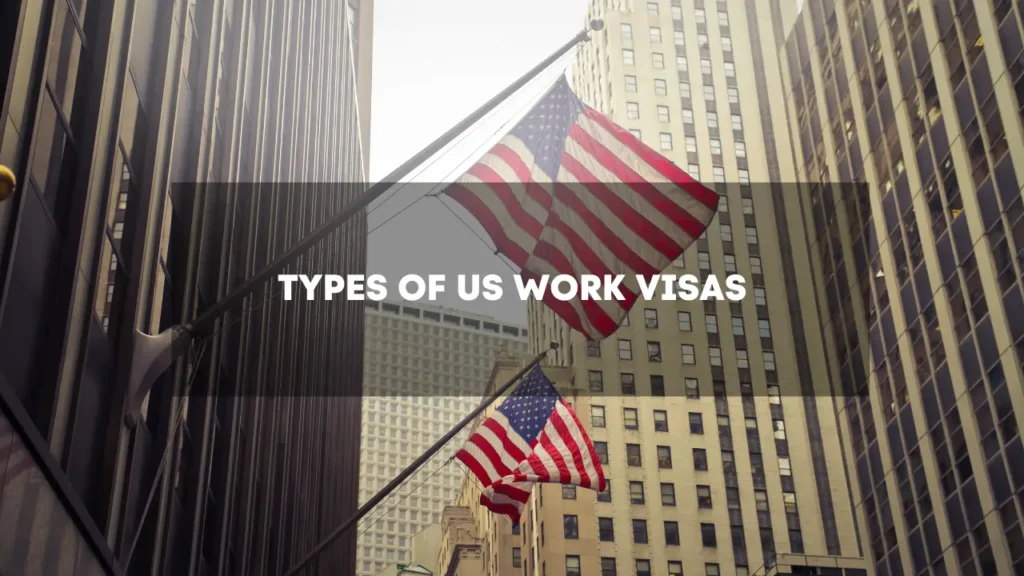Are you thinking about working in the United States? The US offers several types of work visas, each designed for specific situations. But navigating these options can feel like finding your way through a maze. Which visa suits your needs? How much does it cost? This guide breaks down the different types of US work visas, their requirements, and costs, making your journey smoother.
Table of Contents
Overview of US Work Visa
The US offers both temporary and permanent work visas. Temporary visas, like H-1B and L-1, allow you to work in the US for a fixed period, while employment-based green cards (EB-2, EB-3) offer permanent residency.
Read More:- How can i start a Company on H1B visa
H-1B Visa: Specialty Occupations
The H-1B visa is one of the most popular work visas for skilled professionals. It is ideal for those in fields like IT, engineering, and finance.
H-1B Visa Requirements:
- A US employer must sponsor you.
- You need a bachelor’s degree or higher.
- The job must require specialized knowledge.
India to USA Visa Cost for H-1B:
- Filing Fee: $460
- Fraud Prevention Fee: $500
- Premium Processing (Optional): $2,500
The H-1B lottery system makes this visa competitive, with a yearly cap of 85,000 visas.
L-1 Visa: Intracompany Transfers
The L-1 visa allows employees of multinational companies to transfer to a US branch.
Types of L-1 Visa:
- L-1A: For executives and managers.
- L-1B: For employees with specialized knowledge.
This visa is excellent for businesses expanding into the US.
O-1 Visa: Extraordinary Ability
If you have extraordinary skills in arts, sciences, business, or athletics, the O-1 visa may be for you.
Key Requirements:
- Demonstrated national or international recognition.
- Proof of awards, media coverage, or publications.
Read More:- How to Get Us Work Visa From India?
TN Visa: For Canadian and Mexican Citizens
Under NAFTA/USMCA, professionals from Canada and Mexico can apply for a TN visa.
Requirements:
- Proof of Canadian or Mexican citizenship.
- A job offer in the US from an eligible profession (e.g., engineers, teachers, scientists).
E-2 Visa: Treaty Investors
For those looking to invest in a US business, the E-2 visa is a great option.
Eligibility:
- Must be from a country with a US investment treaty.
- Must invest a substantial amount in a US business.
EB-2 and EB-3: Green Card Through Employment
If you’re aiming for a US green card, employment-based visas like EB-2 (advanced degree professionals) and EB-3 (skilled workers) are worth exploring.
Application Process:
- PERM Labor Certification by the US employer.
- I-140 Petition for Immigrant Worker.
- Green Card Application (Adjustment of Status or Consular Processing).
H-2B Visa: Seasonal Workers
For non-agricultural seasonal jobs, the H-2B visa is available.
Common Industries:
- Hospitality
- Landscaping
- Construction
J-1 Visa: Exchange Visitors
If you want to work and learn, the J-1 visa is for exchange visitors like researchers, teachers, and interns.
E-3 Visa: Australian Professionals
Exclusively for Australian citizens, the E-3 visa is similar to H-1B but has less competition.
Employment-Based Green Cards
EB-1 Visa (Priority Workers)
- Includes individuals with extraordinary ability, outstanding professors, and executives
EB-2 Visa (Advanced Degree Professionals)
- For professionals with advanced degrees or exceptional ability
EB-3 Visa (Skilled and Unskilled Workers)
- For skilled workers, professionals, and other workers
EB-4 Visa (Special Immigrants)
- For religious workers, certain broadcasters, and other special groups
EB-5 Visa (Investor Visa)
- Requires a minimum investment of $900,000 to $1.8 million
India to USA Visa Cost Breakdown
Visa costs vary. For example:
- H-1B: $460 – $6,460 (with legal & premium fees)
- L-1: $4,500 – $7,000
- O-1: $705 – $3,000
How to Apply for a US Work Visa?
- Secure a job offer.
- Employer files a petition (for most work visas).
- Attend a US embassy interview.
- Receive your visa stamp.
Types of US Work Visas
| Visa Type | Eligibility | Validity | Renewal |
| H-1B | Specialty Occupations | 3 years | Yes |
| L-1 | Company Transfers | 1-3 years | Yes |
| EB-2 | Advanced Degrees | Permanent | N/A |
Common Reasons for Visa Denials
- Incomplete documentation
- Not meeting eligibility criteria
- Suspicion of immigration intent
Extending or Changing Your Work Visa
You can extend many work visas (H-1B, L-1) or switch to a green card if eligible.
Conclusion
Understanding the Types of US Work Visas can help applicants navigate the immigration process. Whether applying for a temporary visa or seeking a green card, it’s essential to follow the right steps and meet all requirements.
FAQs
Can I switch from an H-1B visa to a green card?
Yes, many H-1B holders apply for green cards through their employers.
What is the processing time for an L-1 visa?
Usually 2-4 months, but premium processing speeds it up.
Do I need a job offer to apply for a US work visa?
Yes, most work visas require a US employer sponsor.
Can my family come with me on a work visa?
Yes, most visas (H-1B, L-1, O-1) allow spouses and children to accompany you.
Is there a work visa without a lottery system?
Yes, L-1, O-1, and TN visas do not require a lottery.
How long does it take to get a U.S. work visa?
Processing times vary but range from a few months to over a year.
Can I switch employers on an H-1B visa?
Yes, but a new employer must file a petition.
Can work visa holders bring their families?
Most work visas allow dependents to apply for derivative visas.
What happens if my work visa expires?
You may need to leave the U.S. or apply for an extension.
Is there a lottery for work visas?
H-1B visas are subject to a lottery due to high demand.
Can a work visa lead to a green card?
Yes, many work visas provide pathways to permanent residency.


